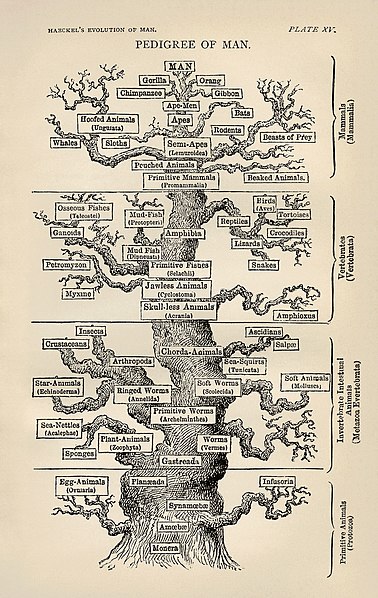For when life makes a fool of the textbooks.
In Evernote, courtesy a reader, for example:
Tree of Life in tatters: “The problem is rampant in systematics today. An article in Nature reported that “disparities between molecular and morphological trees” lead to “evolution wars” because “[e]volutionary trees constructed by studying biological molecules often don’t resemble those drawn up from morphology.”14 Another Nature paper reported that newly discovered genes “are tearing apart traditional ideas about the animal family tree” since they “give a totally different tree from what everyone else wants.”15 So severe are the problems that a 2013 paper in Trends in Genetics reported “the more we learn about genomes the less tree-like we find their evolutionary history to be,”16 and a 2012 paper in Annual Review of Genetics proposed “life might indeed have multiple origins.”17 – See more at: http://www.evolutionnews.org/2014/03/cosmos_episode_083331.html#backfn13

Shouldn’t that be “chips,” not “tatters”? Anyway, he recommends Evernotes for keeping track. Today, you need something just to keep up with all the instances of what’s really happening vs. the bumf:
In 1980, Carl Sagan knew nothing about ENCODE and modENCODE. With all the revelations of genetic complexity coming to light in the past 34 years, these must be hard times for Neil deGrasse Tyson to keep a straight face while sweeping his hand up the cartoon-drawn Tree of Life in Cosmos 2.0 and ascribing “all the beauty and diversity of life” to random mutations. As Casey Luskin noted, it only makes sense if you don’t think about it.
But sometimes we need to think about things.
And he says a system like Evernotes makes it easy to go right through to the original source and read it again in context.

Here’s another collection, including:
“[O]ur ability to reconstruct accurately the tree of life may not have improved significantly over the last 100 years” (M. A. Wills, “The Tree of Life and the Rock of Ages: Are We Getting Better at Estimating Phylogeny?,” BioEssays, Vol. 24: 203-207 (2002) reporting on the findings of M. J. Benton, “Finding the Tree of Life: Matching Phylogenetic Trees to the Fossil Record Through the 20th Century,” Proceedings of the Royal Society B, Vol. 268: 2123-2130 (2001).)
Follow UD News at Twitter!